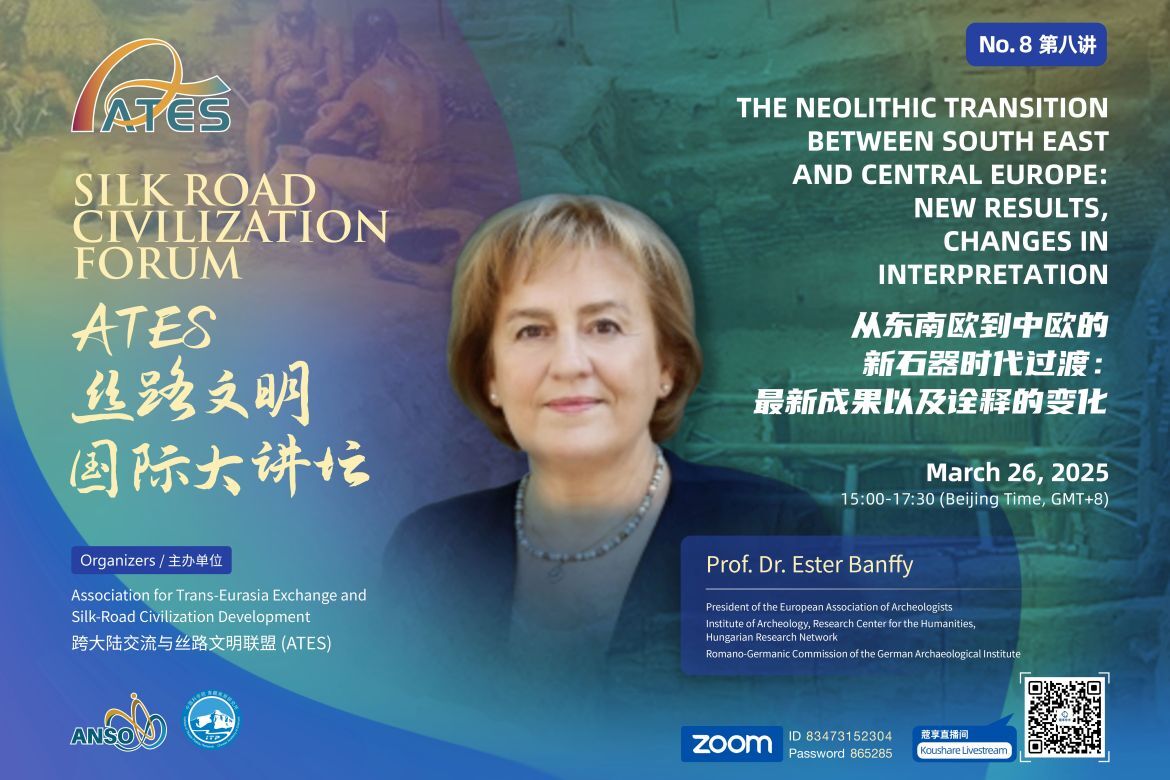Eszter Bánffy, Research Professor at the Institute of Archaeology (HUN-REN RCH) delivered a presentation at the ATES Silk Road Forum on March 26, focusing on the Neolithic transition (6000–5350 cal BC) between Southeastern and Central Europe, and offering new perspectives based on recent research.
At the advent of the Neolithic in Europe, one major route of the spread of farming in Europe led across the central Balkan Peninsula, over the Carpathian basin and further along the Danube valley towards Western Central Europe. Rapid advances and halts alternated until the descendants of the first Balkan farmers reached the southern Carpathian basin, which was the focus of her talk.

Farmers reached the marginal zones of the alluvial riverine Danube landscape to the cool and wet, wooded hills of the western Carpathian basin at the advent of the 6th millennium cal BC, where they stopped for different reasons. This area proves to be key to understanding the encounters with locals and restructuring, resulting in major bottlenecks of Neolithic lifeways. Eszter Bánffy focused on elements like networks, settlement patterns, architecture, animal husbandry, ritual customs and new bioarchaeological results to highlight the nature of the changes, bound up with the formation of the first farmers’ communities of Central Europe, the Linearbandkeramik (LBK).

